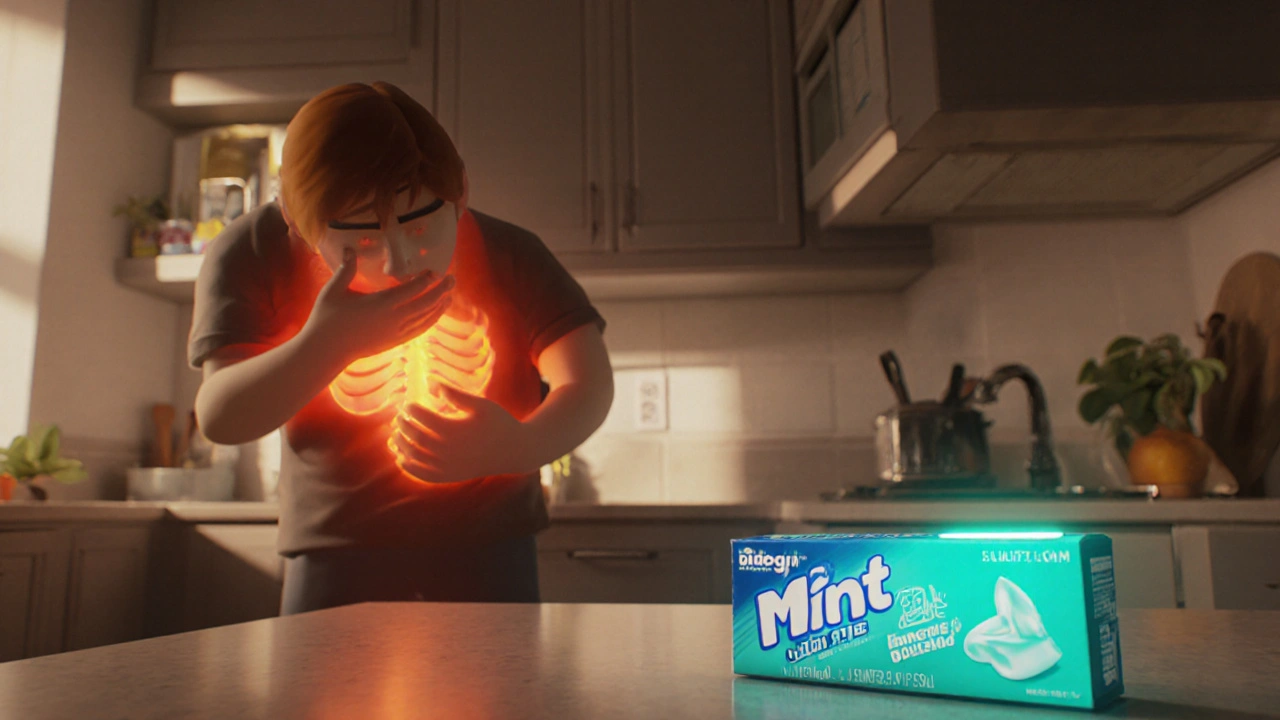Acid Reflux
When dealing with acid reflux, a condition where stomach acid moves back into the esophagus causing irritation and discomfort. Also known as GERD, it often shows up as heartburn, a burning feeling behind the breastbone and can be aggravated by a hiatal hernia, a situation where part of the stomach pushes through the diaphragm. A common line of treatment involves proton pump inhibitors, drugs that lower stomach acid production. Understanding how these pieces fit together helps you tackle the problem head‑on.
Acid reflux isn’t just a random annoyance; it’s often triggered by everyday choices. Heavy meals, spicy foods, caffeine, and alcohol can all relax the lower esophageal sphincter, letting acid slip up. Being overweight adds pressure on the abdomen, which can push acid upward. Smoking also weakens the sphincter and reduces saliva, a natural buffer. Knowing these triggers lets you make quick tweaks—like cutting back on late‑night snacks or swapping fried foods for lighter options—to keep symptoms at bay.
Doctors have several tools to confirm that you’re really facing acid reflux. An upper endoscopy lets them see the lining of your esophagus and check for damage. For a more detailed picture, a 24‑hour pH monitor measures how much acid actually reaches the esophagus during a typical day. These tests help differentiate simple heartburn from more serious conditions like esophagitis or Barrett’s esophagus, guiding the right treatment plan.
Medication is usually the first line of defense. Proton pump inhibitors—such as omeprazole or lansoprazole—reduce acid output dramatically and often provide fast relief. H2 blockers like ranitidine work a bit slower but can be useful for occasional flare‑ups. Antacids give instant, short‑term soothing by neutralizing acid, but they don’t heal the lining. If medicines alone don’t cut it, doctors may suggest a surgical option called fundoplication, where the top of the stomach is wrapped around the lower esophagus to reinforce the barrier.
Beyond pills, lifestyle adjustments can make a huge difference. Elevating the head of your bed by 6‑8 inches uses gravity to keep acid down while you sleep. Eating smaller, more frequent meals reduces stomach pressure. Chewing gum after meals stimulates saliva, which helps neutralize acid. Losing even a few pounds can lower abdominal pressure and improve symptoms dramatically. These simple steps work hand‑in‑hand with medication for a well‑rounded approach.
If acid reflux goes untreated, it can lead to complications. Chronic irritation may cause esophagitis, which feels like a raw throat and can bleed. Over time, the lining can change—a condition called Barrett’s esophagus—that raises the risk of esophageal cancer. Strictures, or narrowed sections of the esophagus, can make swallowing painful. Spotting these warning signs early—persistent difficulty swallowing, unexplained weight loss, or blood in the vomit—means you can get prompt care.
When to see a professional? If over‑the‑counter remedies don’t ease the burning after two weeks, or if you experience chest pain, hoarseness, chronic cough, or asthma‑like symptoms, it’s time to book an appointment. A qualified physician can run the right tests, tailor medication, and discuss whether you might benefit from lifestyle coaching or a surgical review. Below you’ll find a curated list of articles that dive deeper into each aspect—from medication choices to diet hacks—so you can build a plan that fits your life.

Chewing Gum Benefits for Heartburn Relief
- by Colin Edward Egan
- on 16 Oct 2025
Discover how chewing gum can ease heartburn, the science behind it, best gum choices, and practical tips for safe, effective relief.
